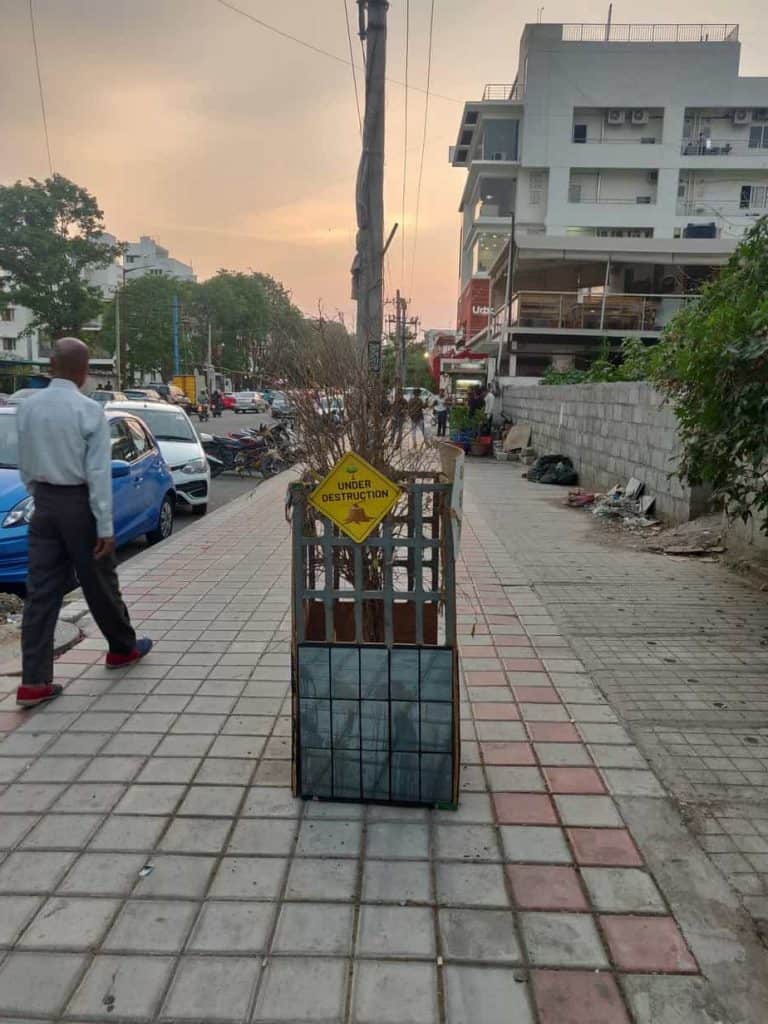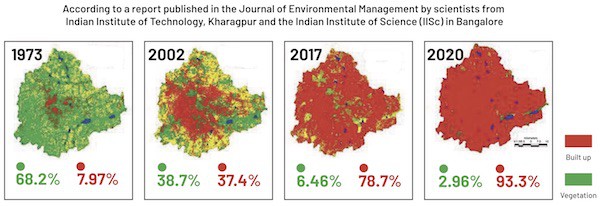
Pic: Gaurav Choudhary
Recently, I came across an article about the rate at which Bengaluru is losing its greenery. I was born and brought up in Jodhpur, Rajasthan, but I love Bengaluru and its culture. I was disturbed to know about the loss of Bengaluru’s green cover. Hence I decided to spark a conversation on this issue by putting up a piece of street art.
I built the model at my house, and assembled it at the site. The installation, named ‘Under Destruction: Garden City to Grey City’, involves a plant at the centre, and glass panes plastered upon its fencing. The idea was to show a glass building under construction, and a tree trapped in it; the tree would have to be cut down to construct the building.
The glass building signifies the ‘Silicon Valley’ aspect of Bengaluru. The objective of the art was to show how construction for urban development is leading to slow death of our tree cover. A map showing the reduction in Bengaluru’s green cover over the years, was also put up over the installation.

Map showing Bengaluru’s depleting green cover, on the installation. Pic: Gaurav Choudhary
The installation is displayed on a footpath near the junction of 17th Cross road and 27th Main road, in HSR Layout Sector 2. Around 300 people view the installation everyday. They are shocked to know the current state of green cover in the city. The general perception is that Bengaluru is very green, so they feel bad after understanding the data.
There is a good side to the city’s growth, but we need to redefine our perspective of growth. Construction for urban development is encroaching on and destroying our heritage green cover. We need the right policies to maintain the balance between greenery and development in the city, so that everyone can breathe healthy, clean air.